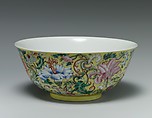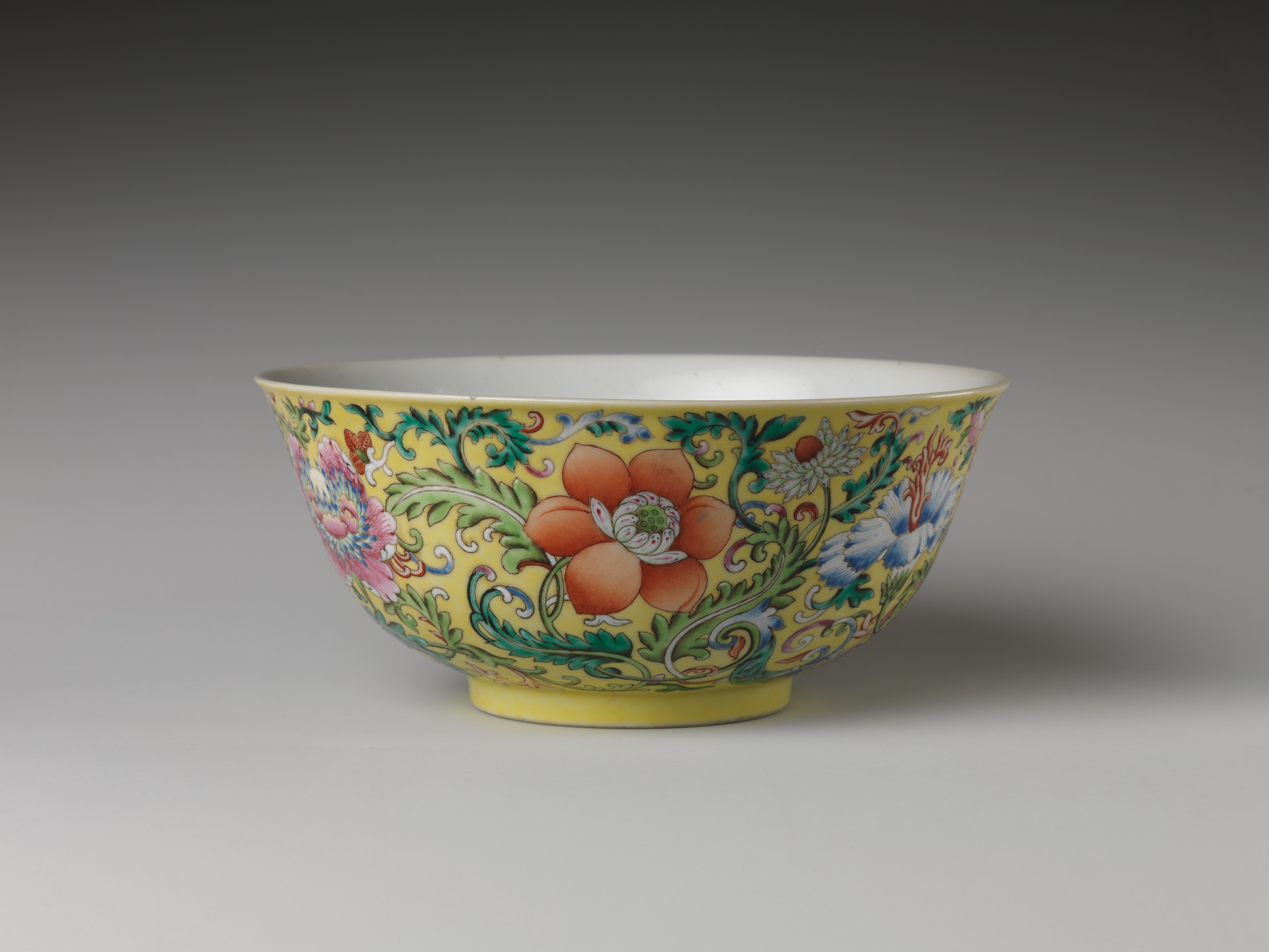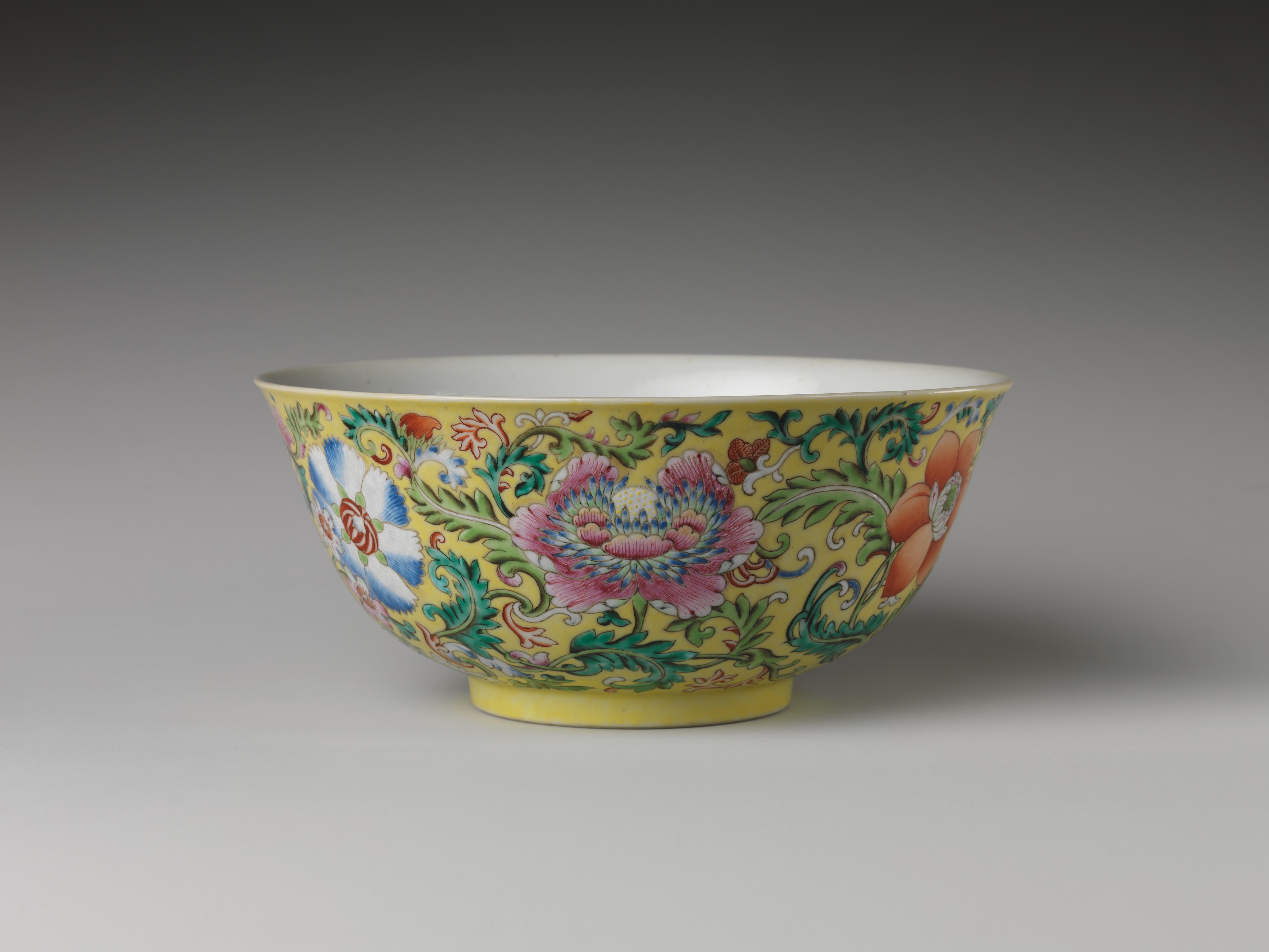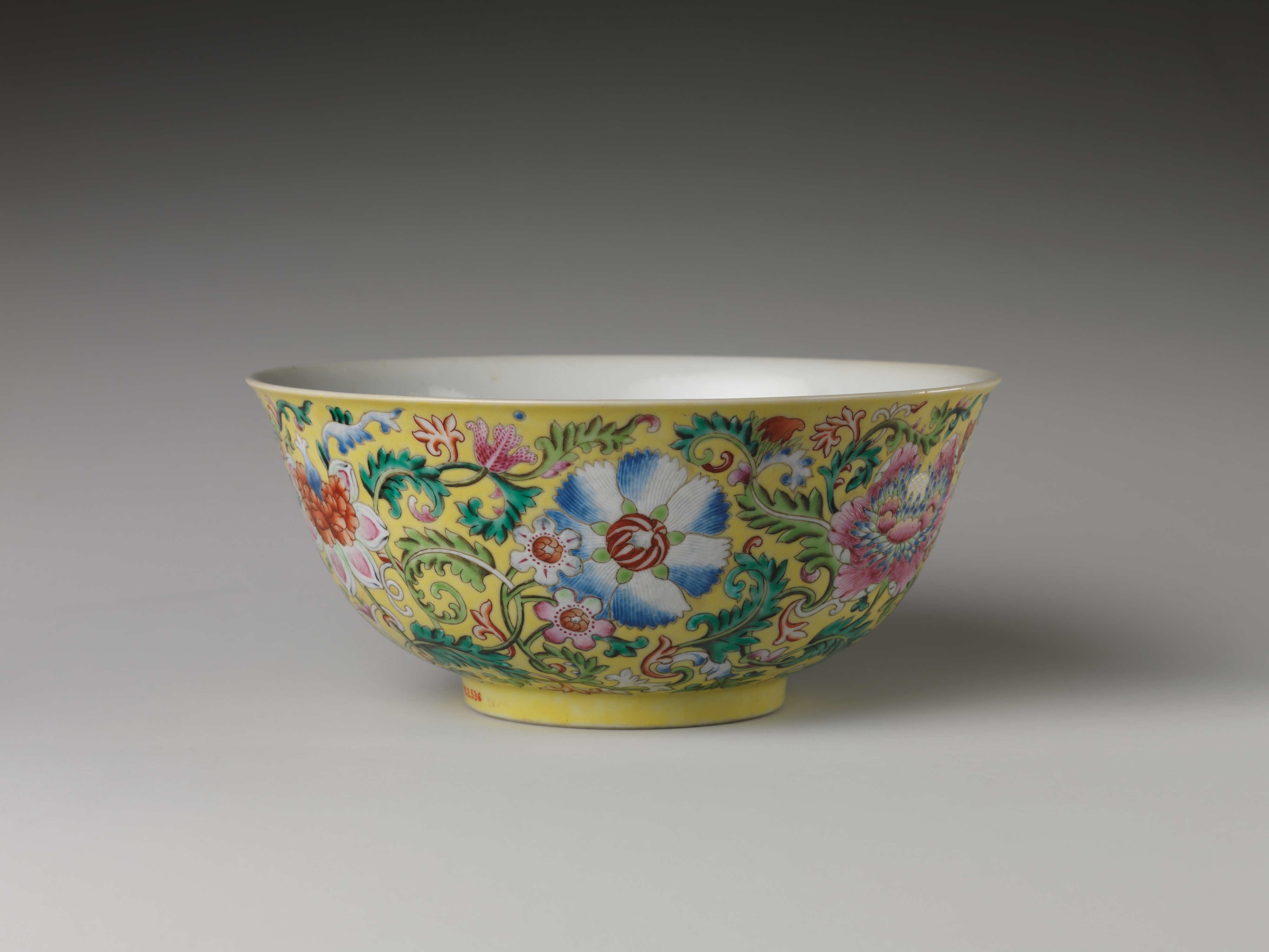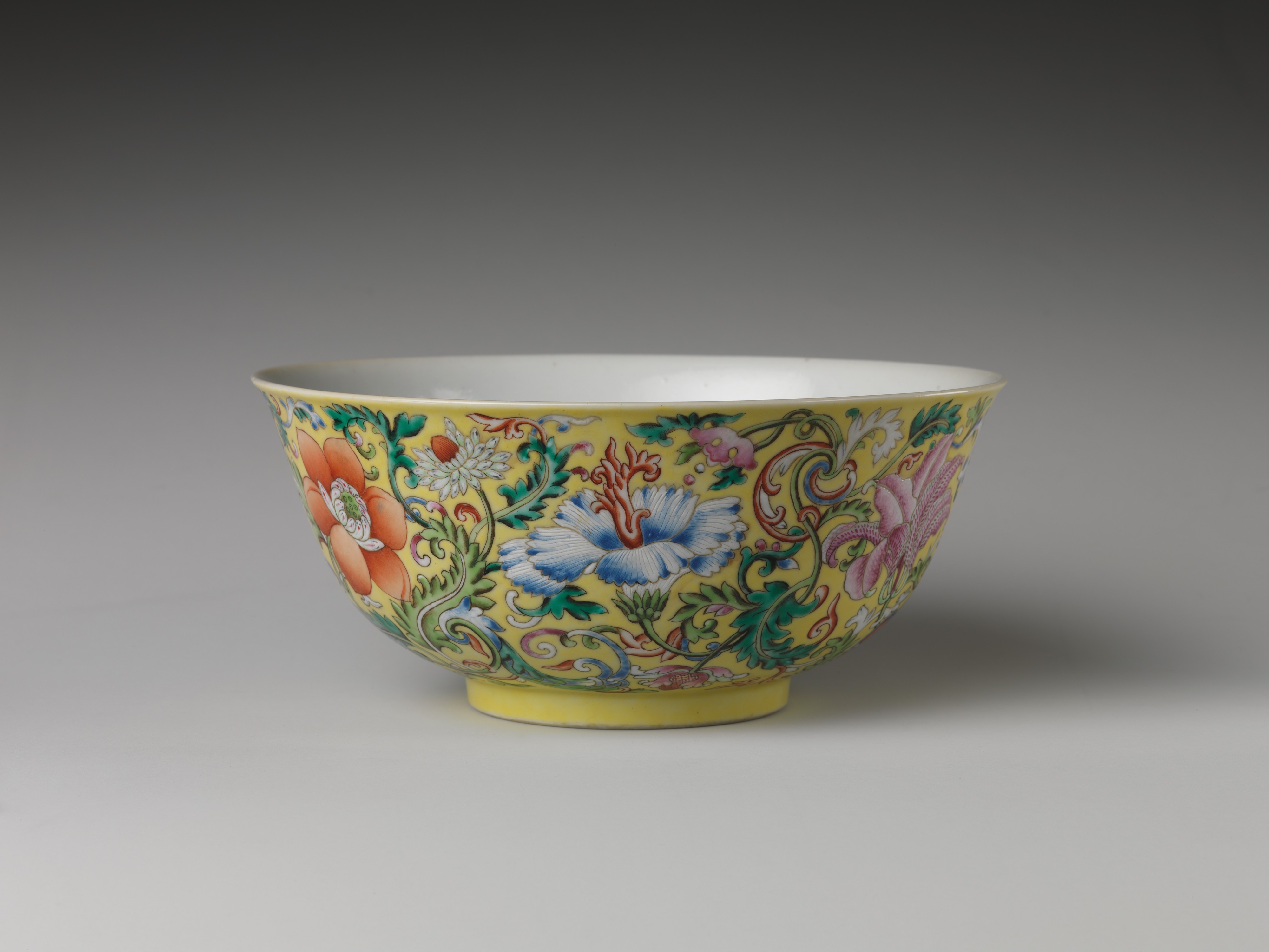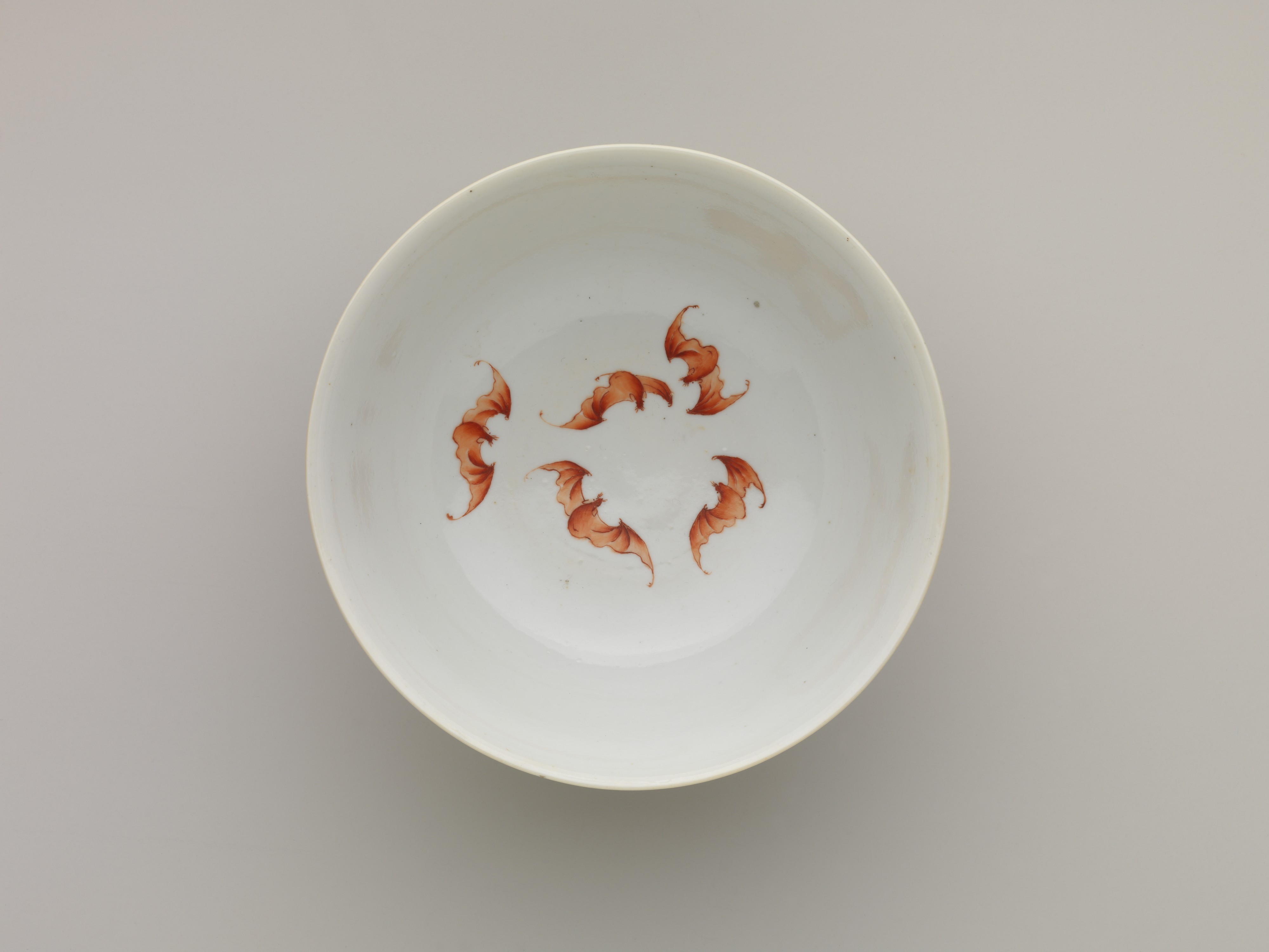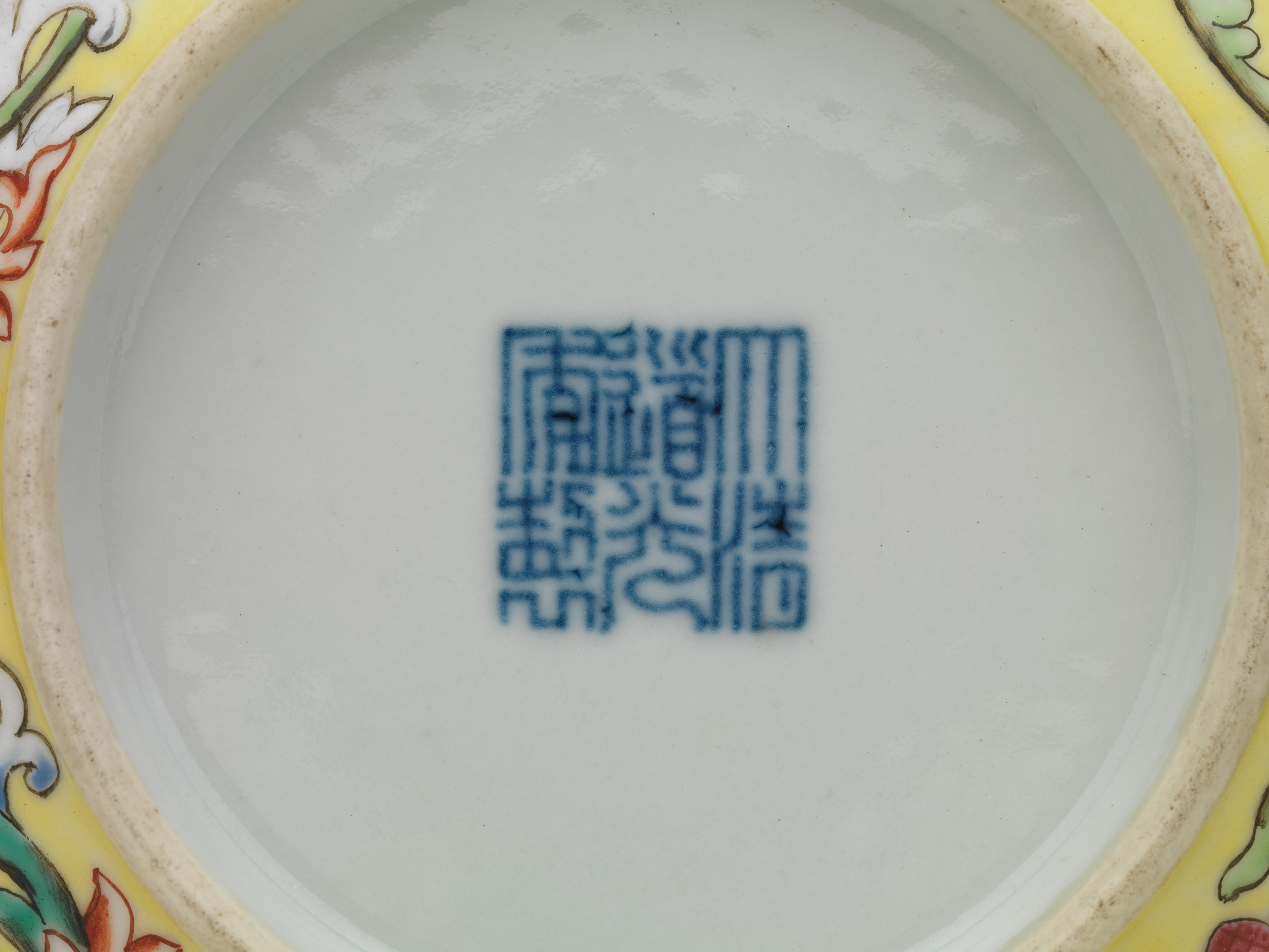Bowl with imaginary composite flowers
Qing dynasty (1644–1911), Daoguang mark and period (1821–50)
The blossoms and leaves on this bowl illustrate an imaginary flower that combines elements of the peony, lotus, chrysanthemum, pomegranate, and other plants. Intended to represent majesty and beauty, this decorative flower (often known as a baoxianghua) first appeared in the sixth or seventh century. Flowers are not found as motifs in Chinese art prior to this period, and it is possible they were introduced with Buddhist imagery.
Due to rights restrictions, this image cannot be enlarged, viewed at full screen, or downloaded.
This artwork is meant to be viewed from right to left. Scroll left to view more.
